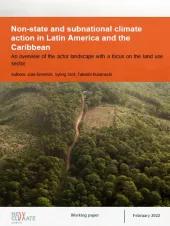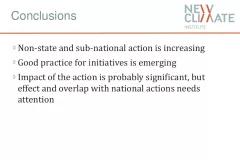The two reports present a brief overview of emerging climate action by cities, regions, and companies in the two largest greenhouse gas emitters in the Global South.
The Paris climate agreement adopted in 2015 recognised “non-Party stakeholders” mainly comprised of non-state actors (e.g. businesses, investors and civil society organisations) and subnational actors (e.g. cities and regions) as key contributors to achieve its long-term temperature goal. Non-state and subnational actors are considered today a core element under the “catalytic and facilitative” post-Paris regime. The two reports aim to obtain enhanced understanding of nascent but rapidly growing non-state and subnational actors’ action on GHG emissions reductions in China and India. We present an overview of findings in the recent literature on (i) landscape of non-state and subnational action, (ii) interactions between countries' policy making and non-state and subnational actors (iii) potential GHG emissions reductions additional to the reductions expected under national policies, and (iv) to the extent possible, progress towards their own short- to mid-term targets and long-term goals. Through these reports we also aim to partially fill the knowledge gaps on non-state and subnational climate action in China and India, which is often not sufficiently disclosed and/or not well captured by Europe- and US-based global data platforms.






